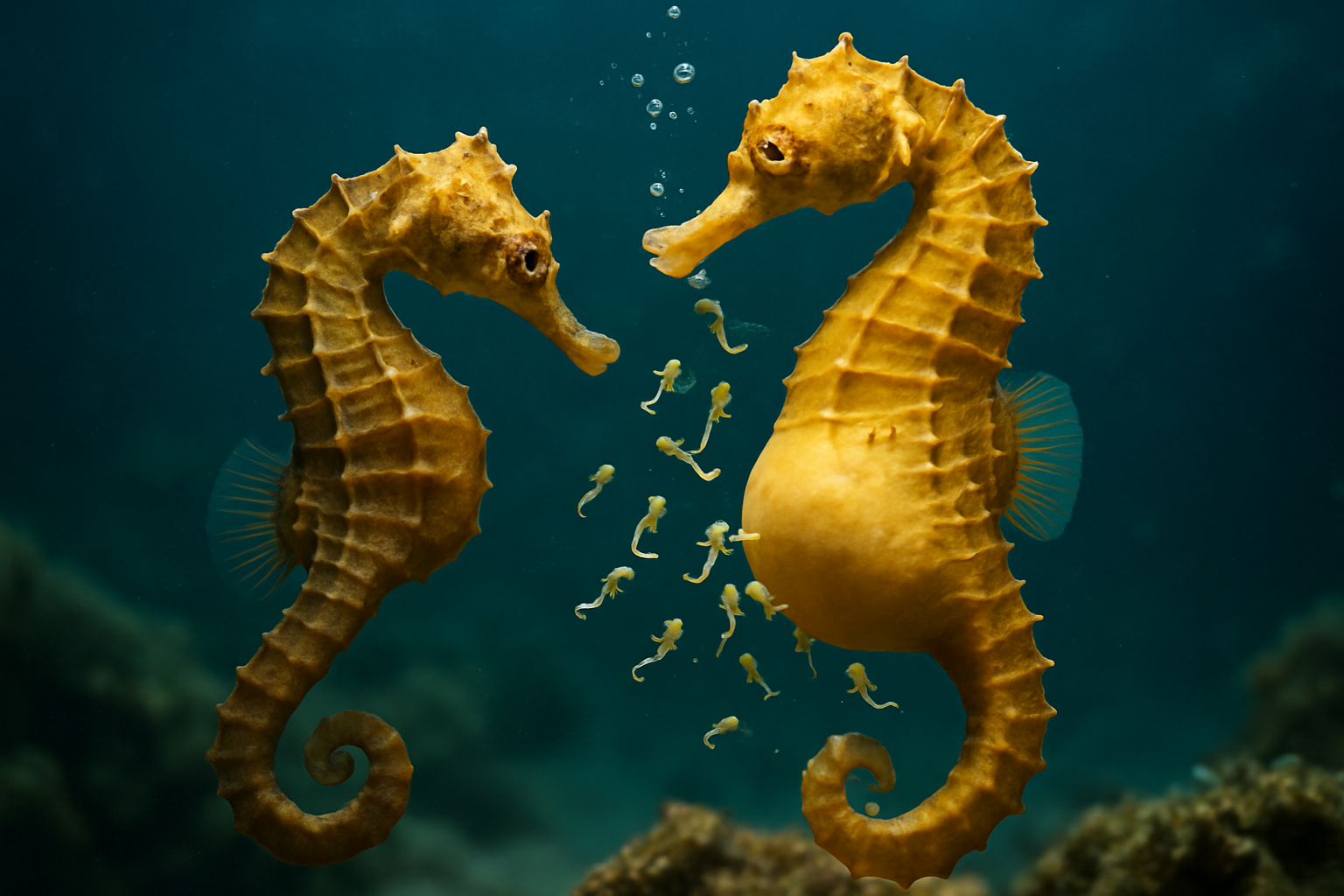Unraveling the Secrets of Seahorse Parenting
In the vibrant underwater world, a unique phenomenon unfolds that challenges traditional notions of animal parenting. Seahorses, those enigmatic creatures of the ocean, have developed a remarkable approach to reproduction and child-rearing that sets them apart in the animal kingdom. This fascinating process, where male seahorses carry and give birth to offspring, offers a captivating glimpse into the diversity of nature's parenting strategies.

The courtship dance of seahorses is an intricate affair, often lasting for several days. During this time, the pair engages in a synchronized swimming pattern, changing colors and intertwining their tails. This elaborate ritual strengthens their bond and ensures successful egg transfer.
Male Pregnancy: A Unique Adaptation
Once the female deposits her eggs into the male’s brood pouch, a truly remarkable process begins. The male fertilizes the eggs internally and provides them with oxygen and nutrients through a placenta-like structure. This pregnancy can last anywhere from 9 to 45 days, depending on the species.
During the gestation period, the male’s body undergoes significant changes. The brood pouch expands to accommodate the growing embryos, and the male’s hormone levels fluctuate to support the developing offspring. This adaptation allows for a level of paternal care that is unparalleled in the animal world.
The Miracle of Seahorse Birth
When the time comes for the seahorse babies to be born, the male experiences contractions similar to those of female mammals during childbirth. Through a series of muscular contractions, the male expels the fully-formed seahorse fry from his brood pouch into the surrounding water.
The number of offspring can vary greatly, with some species producing as few as 5 fry while others can release up to 1,500 in a single birth. These miniature replicas of their parents are immediately independent and must fend for themselves in the vast ocean.
Evolutionary Advantages of Male Brooding
The unique reproductive strategy of seahorses offers several evolutionary advantages. By transferring the responsibility of egg incubation to the male, females can start producing another batch of eggs almost immediately after mating. This increases the overall reproductive output of the species.
Additionally, male brooding ensures a higher survival rate for the offspring. The protected environment of the brood pouch provides shelter from predators and optimal conditions for development. This investment in parental care significantly improves the chances of survival for the young seahorses.
Conservation Challenges and Human Impact
Despite their fascinating adaptations, seahorses face numerous threats in the wild. Habitat destruction, climate change, and overfishing for the aquarium trade and traditional medicine markets have led to declining populations worldwide.
Conservation efforts are underway to protect these unique creatures. Marine protected areas, sustainable fishing practices, and captive breeding programs are being implemented to ensure the survival of seahorse species. Educating the public about the importance of seahorse conservation is crucial in garnering support for these initiatives.
The Future of Seahorse Research
As our understanding of seahorse biology grows, researchers are exploring new avenues to support these remarkable animals. Recent studies have focused on improving captive breeding techniques, which could help reduce the pressure on wild populations.
Scientists are also investigating the potential medical applications of seahorse-derived compounds. Some species produce substances with anti-inflammatory and wound-healing properties, opening up possibilities for novel pharmaceutical developments.
In conclusion, the extraordinary parenting strategy of seahorses serves as a testament to the incredible diversity of life on our planet. By continuing to study and protect these unique creatures, we not only ensure their survival but also gain valuable insights into the marvels of nature’s adaptations.





